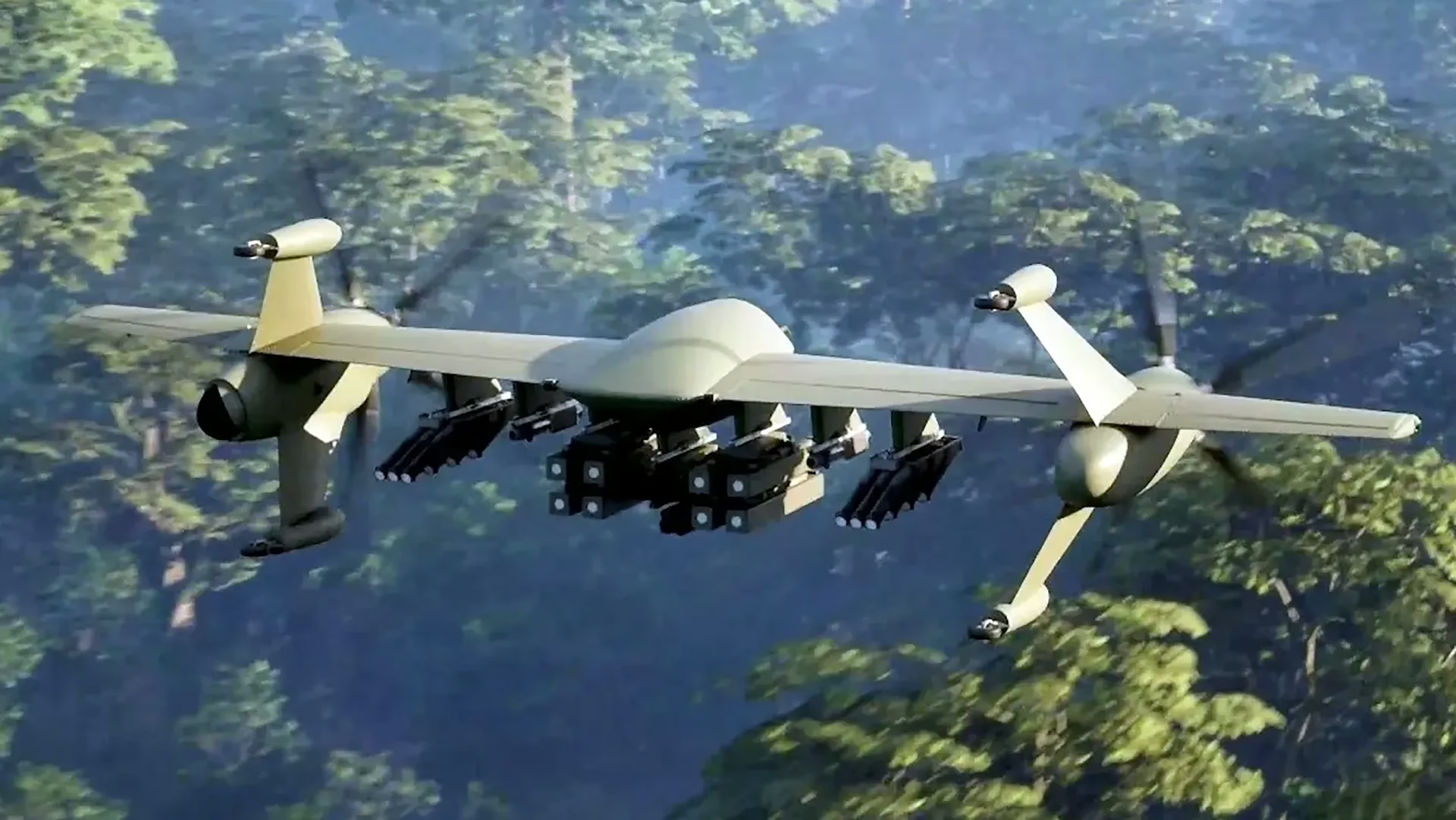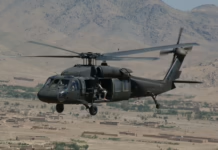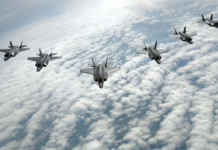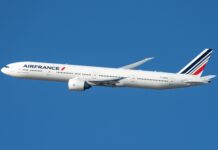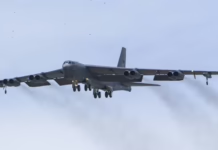Full-scale demonstrator now in ground testing as Lockheed Martin subsidiary positions new rotor-blown wing design to replace aging Shadow drones
Sikorsky has unveiled its Nomad family of autonomous aircraft, revealing Monday that a full-scale demonstrator of the hybrid-electric rotorcraft is already undergoing ground testing as the company positions the design to capture Army reconnaissance contracts.
The vertical-lift manufacturer introduced the Nomad trade name Oct. 6 for what it previously called its rotor-blown wing program—a class of tail-sitting unmanned aircraft that take off vertically before rotating 90 degrees to transition into horizontal flight.
“The focus here is on the ability of this vertical take-off and landing UAS to operate in austere environments from shipboard operations and runway independent places,” said Ramsey Bentley, Sikorsky’s director of strategy and business development for advanced programs.
The aircraft features a hybrid-electric propulsion system with twin wing-mounted prop-rotors that blow air over a central wing to generate lift. Sikorsky’s Matrix technology, originally developed to enable autonomous operations of conventional helicopters like the UH-60 Black Hawk, controls the unmanned flights.
Sikorsky is developing multiple Nomad variants spanning Group 3 and Group 4 unmanned aircraft categories. The Pentagon defines Group 3 systems as weighing under 1,320 pounds with speeds below 250 knots and operating altitudes under 18,000 feet. Group 4 aircraft exceed 600 kilograms but maintain the same altitude restrictions.
The company has flown a smaller Nomad 50 demonstrator—weighing 115 pounds with a 10-foot wingspan and 20-pound payload—for much of the past year. But development efforts center on the Nomad 100, a Group 3 design with an 18-foot wingspan now in ground testing ahead of planned flight trials in coming months.
Sikorsky is targeting the Nomad 100 to replace Textron’s RQ-7B Shadow, which the Army is phasing out under its aviation transformation initiative. The company has also developed a Group 4 design to potentially succeed General Atomics’ MQ-1C Gray Eagle but hasn’t given that variant a formal designation or committed to building a demonstrator.
“The Group 3- and the Group 4-sized aircraft can do both kinetic and non-kinetic effects missions,” Bentley said. “They also have a cargo capability for contested logistics.”
Beyond Army applications, Sikorsky is competing the Nomad 100 in the Defense Advanced Research Projects Agency’s Early VTOL Aircraft Demonstration program, known as EVADE. That effort evolved from DARPA’s earlier ANCILLARY initiative, which sought to develop new ship-based vertical take-off and landing aircraft.
General manager Rich Benton said the largest Nomad variant will occupy roughly the same footprint as Sikorsky’s widely fielded Black Hawk utility helicopter.
“The resulting Nomad family of drones will be adaptable, go-anywhere, runway-independent aircraft capable of land- and sea-based missions across defense, national security, forestry and civilian organizations,” Benton said.
The company is marketing the aircraft beyond military customers and exploring civilian applications including aerial support for wildland firefighting crews. Benton said Nomads would complement Sikorsky’s existing manned rotorcraft, particularly in the Indo-Pacific theater where distance poses operational challenges.
Sikorsky will display the Nomad 100 at the Association of the U.S. Army’s annual conference in Washington, D.C., beginning Oct. 13.

Key Takeaways
- Sikorsky’s Nomad family features autonomous rotor-blown wing aircraft that take off vertically before rotating 90 degrees for horizontal flight, with a full-scale Group 3 demonstrator now in ground testing ahead of flight trials.
- The Nomad 100 is positioned to replace the Army’s retiring RQ-7B Shadow reconnaissance drones, while a larger Group 4 variant has been designed to potentially succeed the MQ-1C Gray Eagle.
- The aircraft use Sikorsky’s Matrix autonomous flight technology and can perform reconnaissance, kinetic and non-kinetic missions, and contested logistics operations from land or sea-based platforms.
- Applications extend beyond military use to civilian operations including wildland firefighting support, with Sikorsky marketing the runway-independent systems to defense, national security and forestry organizations.



